|
TennisOne Lessons
The Essentials of Shot Making: Vision Feisal Hassan, USPTA Master Professional
Technique, speed, agility, footwork, strength, mental toughness, and match strategies have always been the main criteria in judging tennis ability. And all tennis-training programs have been designed with those criteria in mind, even though our body will only respond to what it can see. Despite this fact, little attention has been paid to vision. For decades, players have been told to "watch the ball" or "keep their eye on the ball." These phrases seem to be a maxim that should solve this problem when playing tennis. But the fact is, it's not difficult to know what to do, but it's difficult to translate that into action. In other words, how to do what you know! Not watching the ball is typically due to "visual wandering" and a lack of visual discipline/training. Running, acceleration, eye movement and the speed of the ball are the visual spoilers. Try reading a newspaper and running on the spot. You will notice that the running makes this activity very difficult. By undertaking a simple visual training program, a tennis player can improve his performance. That's because the eye, like the muscles in our bodies, can be strengthened to perform better with exercise. By seeing better, you can play better because what and how you see, effects what and how you will do. Some of the required visual skills that can be enhanced through training are:
Head Positioning: The average adult head weighs 12 - 15 pounds. When the head is moved excessively in order to see, we risk throwing the whole body out of balance. Thus, players need the ability to identify and feel their head positioning during strokes.
Dynamic Visual Acuity: Playing tennis is a visual stress test. It requires more from your eyes than the ordinary daily activities of reading a newspaper and working on a computer. The two factors that make seeing the ball difficult are your motion and the speed of the ball. A player who sees the ball late and exercises poor visual judgment is at a distinct disadvantage. An aggressive player will move around the court, which tires and weakens visual judgment of ball placement and speed. Running impairs visual acuity and many errors occur after a player has been forced to run for a shot. The solution, of course, is preparation. You can hone dynamic visual acuity so you can function optimally in matches in which the ball is hit hard and you are forced to run a great deal. Eye Tracking: This is the ability to follow a moving object smoothly and accurately with both eyes. In tennis, it is desirable to track the ball to the moment of contact, that is to "see the ball hit the racquet." But, according to Dr. Jack Groppel, a tennis ball contacting the strings happens way too fast to see with the human eye. The comparison he offers was of a normal everyday 60-cycle deck lamp. The light of this standard lamp seems steady enough, but is actually flickering on and off 60 times every second, so fast it appears to be a steady beam of light. Have any of us ever seen this light either on or off? No. The reason is that it simply turns off and on too fast for the human eye to record. According to Dr. Groppel, the moment of a tennis racquet striking a ball takes less time than a 60-cycle light flickers on and off. It takes 1/10th of a second to relate information from the eyes to the brain. Research by the LTA shows that watching the ball only occurs 5-6 feet in front of the player, so after this (tracking the ball), de-emphasize watching the ball and emphasize getting into the right position and bring your eyes to the point of contact. We need to "anticipate" and pay attention to preparation; where the ball is going to be and when it's going to be there.
Eye Teaming and Depth Perception: This is the ability to use both eyes together (in unison) to judge the relative distances of objects and to see and move accurately in three-dimensional space. Although we look at the world with both eyes, we are aware of only a single impression of the environment. When the eyes work together as a team, the perceptions of each eye are coordinated. Depth, for example, is perceived when two-dimensional images received by each eye are fused in the brain into one three-dimensional image. As a result, we can judge distance easily and locate objects in space. On the other hand, anyone whose eyes do not team up will find it very difficult to judge distance. Peripheral Vision: This is the ability to maintain and interpret what is happening on the court (in your side vision) while attending to the ball (the specific central vision). Think of a wide receiver in football. When a pass is thrown in his direction, he must focus on the ball, the opponent trying to prevent him from making the catch, and his feet in relation to the sideline. If he does not account for all three things, he won't be consistently successful. The same thing applies to tennis. A player must concentrate on the incoming ball, account for his own position on the court and what his opponent is doing across the net. All three are crucial for a player's "triple vision". Eye-Hand Coordination: This is how the visual system guides the motor system. The eyes lead the hands, not the other way around. Coaches and players who refer to "hand-eye coordination" have missed the significance of this relationship. The visual system leads the motor system. We all use eye-hand coordination in our daily lives and take this skill for granted. Driving a car requires constant coordination between vision, and hands, and feet. Turning a car at an intersection requires the processing of visual information by the brain and an immediate reaction by the hands on the steering wheel to the brain's command. Parallel parking, a more difficult task, requires a series of quick adjustments between the visual system and the hands and feet. Braking is a good example of eye-foot coordination. When we want to stop or slow down, the foot controls the brake pedal, but our vision first processes the information that tells us where and when to brake.
The goals of this article are to:
The Vision Training Program The Vision Training Program is broken down into six types and levels of exercises:
Level 1. Head Positioning Exercises Purpose: to help players identify and feel the head positioning during strokes A. General head positioning The head should remain above the center of gravity and stay relatively still at all times . The more your head is over your center of gravity, the more efficient your visual tracking, balance, strokes and recovery will be. If the head gets too far off the center of gravity as you move to the shot, you will have difficulty hitting with balance, control and recovery. Drill: Upside-Down Cap (Or Folded Towel) Place a cap upside-down or a folded towel on your head. Balls could be hit to you, or points played out. Your goal is to keep the cap or folded towel on your head. The dominant eye is the eye that sends information to the brain quicker than the non-dominant eye. The brain gets the information a few milliseconds faster. And since the brain gets the information quicker, the body reacts quicker. Research shows that the dominant eye's connection with the brain is 10-13 times faster than the non-dominant eye. The test to determine the dominant eye is a simple one. Make a circle with both hands about the size of a tennis ball. Then look through this circle at a fixed object about 15-20 feet away. Next, while holding your line of sight on the object, close your left eye and look through the circle at the object with your right eye. If you can still see the object through the circle, you are right eye dominant. On the other hand, if you can no longer see the object through the circle, you are left eye dominant.
B. Head positioning for Groundstrokes The goal on the groundstrokes is to get the dominant eye closer to the ball. TIP: Make sure your opponent can see both your eyes when you are tracking the ball. C. Head positioning for Volleys The goal is to get your head at the same level as your racquet head when lining up for the ball. D. Head positioning for Serves/Overheads Players typically drop their head prior to hitting the ball. TIP: Keep your head up by keeping your non-dominant hand up "longer" (until the follow-through). Think of an outfielder in baseball getting ready to catch a fly ball. All Stroke Drill Keep a pencil behind your ear while playing out points. If the pencil falls anytime during a point, the opponent wins the point. Level 2. Dynamic Visual Acuity Exercises Purpose: To help players see the ball more effectively and efficiently while the player and ball are moving. Drill: Two-Ball Rally Both players each have a ball. On the count of three, both players feed their ball to the other player and try rallying cooperatively with two balls in play. Drill: Colored Ball Have a basket of balls with different colored balls in it, e.g. yellow, orange and white. If the ball fed to you is an orange ball, hit a forehand; if it's white, hit a backhand; if it's yellow, hit a lob. Another variation could be using the same stroke. For example, if you get a white ball, hit a forehand crosscourt; if you get an orange ball, hit a forehand down-the-line; if you get a yellow ball, hit a forehand lob. Level 3. Eye Tracking Exercises Purpose: To develop the ability to follow a moving ball smoothly and accurately with both eyes. Drill: Ball Characteristics Use command words (or trigger words) to identify the ball characteristics. Shout out the words as soon as you have identified the characteristics. Initially do one characteristic at a time: Ball Characteristics Trigger Words
Drill: Distraction Rally Rally normally from the baseline, while two other players are diagonally across from each other at the net hitting volleys (or touch shots) back and forth simultaneously. Level 4. Eye Teaming and Depth Perception Exercises Purpose: To develop the ability of your eyes to function in unison and to judge relative distances of the ball and to see accurately in three-dimensional space. Drill: In-Out Position yourself at the net and have your coach or hitting partner feed you balls from the opposite baseline with different speeds, heights, spins, directions and depths. You call "in" or "out" based on the ball going past you. A third person can be positioned on the baseline to act as a line judge.
Drill: 4-Quadrant Divide court into four quadrants by extending the center service line all the way back to the baseline. With the line extended, the court has four boxes or quadrants. Number each quadrant from one to four. Position yourself at the net and again have your coach or hitting partner feed you balls from the opposite baseline. As ball goes over the net, you must call out the quadrant number the ball is going to land in. Level 5. Peripheral Vision Exercises Purpose: To develop the ability to monitor and interpret what is happening on the court (in your side vision) while attending to the ball (the specific central vision) Drill: Ball Training Have a partner (holding two balls) standing three to four feet from you. The balls are thrown to you simultaneously, and you must catch one ball in each hand. As you improve, cross your arms to make the catch. Drill: Hand Signals While rallying, have your partner make hand signals (fist, open fist, thumb up or thumb down) to see if you can recognize what the signals are. Level 6: Eye-Hand Coordination Exercises Purpose: To train a player to effectively develop how their visual system guides their motor system. Serve Drill: Two-Ball Collision Have a ball in each hand. Mimic the serve motion and release both balls to try to make both balls "collide" or hit each other. This is great, not only, for an eye-hand coordination drill but also great to develop synchronization of the hands on the serve.
Return Of Serve Drill: Racquet Handle Return You must return serve with the racquet handle (or grip). Groundstroke Drill: Rally Rally from the baseline, but rotate the racquet around your body two times after each hit. Net Play Drill: Volley-Rally Players volley back and forth switching the dominant hand from the grip to throat of the racquet after each volley. This drill emphasizes eye-hand coordination with respect to the point of contact and getting used to muscle tension and relaxation. Another variation is to switch the racquet from one hand to the other after each hit. Trying to develop or improve your watching the ball and judging the ball flight skills are challenging tasks for any player. This article is an example on how this might be achieved. The drills presented are on-court examples and should only serve as guidelines. I have had success with this program. In summary, I believe a good vision training program should always lead to control of the head positioning and movement and the development of the following visual skills:
The next article will be on movement training. Your comments are welcome. Let us know what you think about Feisal Hassan 's article by emailing us here at TennisONE
Feisal is currently the Director of Tennis at the Regency Sport and Health in McLean, Virginia. |

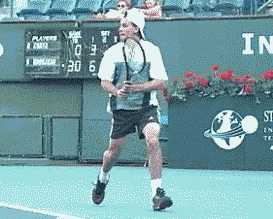
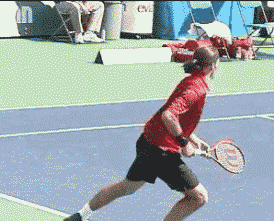
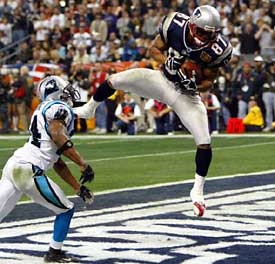
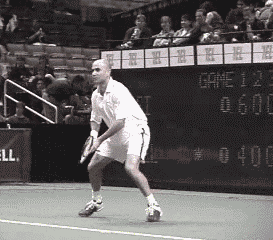
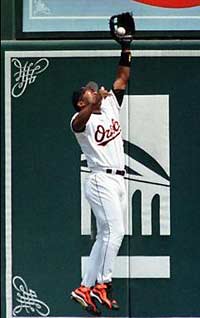
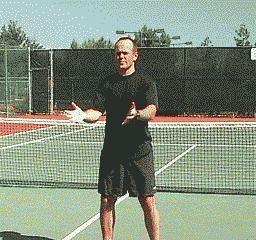
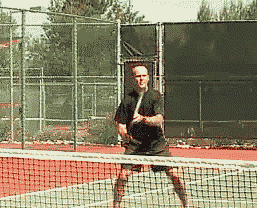
 Feisal Hassan, a USPTA Master Professional and PTR certified professional, is a member of the Head/Penn Racquet Sports National Advisory Board and National Speaker's Bureau, the Director of Certification & Testing for the USPTA Middle States division and a USA High Performance Coach.
Feisal Hassan, a USPTA Master Professional and PTR certified professional, is a member of the Head/Penn Racquet Sports National Advisory Board and National Speaker's Bureau, the Director of Certification & Testing for the USPTA Middle States division and a USA High Performance Coach.